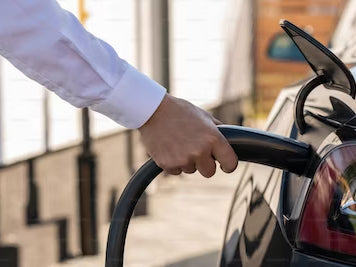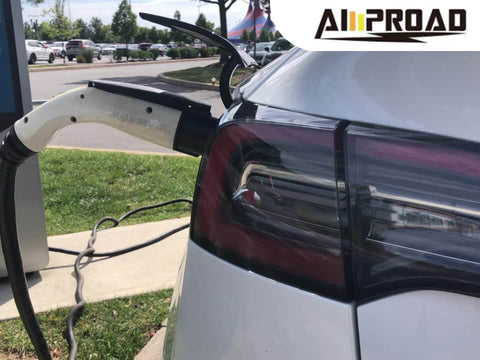
If you're curious about how Tesla Superchargers and Destination Chargers are priced, this guide is here to help. We'll unravel the nuances of their charging costs and payment structures, from understanding Supercharger fees to exploring the distinct pricing of Destination Chargers. You'll learn whether non-Tesla owners can access Destination Chargers, discover loyalty programs for Supercharger users, and gain insights into the charging speed differences between these two key components of Tesla's charging infrastructure. Let's demystify the pricing dynamics of Tesla Superchargers and Destination Chargers together.
How Are Tesla Superchargers Priced?
When it comes to Tesla Superchargers, understanding the pricing structure is essential for electric vehicle owners. Superchargers typically come with a charging cost, and the pricing is influenced by various factors. Location plays a significant role, as charging fees can vary based on regional regulations and electricity costs. Additionally, the charging speed and power output of the Supercharger also contribute to the overall cost, with faster charging rates often associated with slightly higher fees. Tesla provides transparent pricing information through their website and app, allowing users to plan and budget for their charging needs accordingly.
Factors such as infrastructure maintenance, equipment costs, and service offerings contribute to the overall pricing strategy for Superchargers. Tesla aims to balance affordability for users while ensuring the sustainability and continued expansion of their charging network. As the electric vehicle landscape evolves, understanding how Tesla Superchargers are priced empowers users to make informed decisions about their charging habits and aids in the efficient planning of journeys with minimal charging interruptions.
What Sets Tesla Destination Charger Pricing Apart?
Tesla Destination Chargers present a unique pricing structure, distinguishing them from Superchargers. Unlike Superchargers, which often involve direct user billing, Destination Charger fees can vary based on the specific charging location. Many Destination Chargers, strategically placed at hotels, restaurants, and parking facilities, may offer complimentary charging as an amenity to patrons. However, some locations may choose to implement a fee structure for EV users. The variation in fees is influenced by factors such as the charging location's policies, business models, and regional electricity costs.
Understanding the diverse pricing approach of Destination Chargers highlights the importance of checking the specific policies of each charging location. Tesla provides an interactive map on their website and app, allowing users to find Destination Chargers along with pricing information, if applicable, at each location. This flexibility in pricing aligns with Tesla's efforts to cater to different businesses and encourages the widespread adoption of EV charging infrastructure. It also provides users with choices that suit their preferences, whether they prioritize free charging options or don't mind paying a fee for the convenience of charging at certain locations. In essence, the varied pricing of Tesla Destination Chargers reflects the adaptability of the charging network to different business models and user needs.
Are Tesla Superchargers and Destination Chargers Managed Similarly?
The management of fees for Tesla Superchargers and Destination Chargers follows distinct systems, reflecting the diverse nature of these charging options. Superchargers are typically billed directly through the Tesla account of the user. The cost is transparent and straightforward, allowing users to track their charging expenses easily. This direct billing system ensures efficiency and clarity in managing Supercharger fees, providing a seamless experience for Tesla owners seeking rapid charging on the go.
On the other hand, Destination Chargers may have a different payment structure. While some locations offer complimentary charging as an added benefit to customers, others may implement a fee, creating variability in how users are billed. The management of fees for Destination Chargers is often handled by the charging location rather than Tesla directly. This diverse approach allows businesses hosting Destination Chargers, such as hotels and restaurants, to tailor their charging services to their specific business models. For instance, users charging their vehicles at a hotel may experience a different payment process compared to those charging at a restaurant equipped with Tesla Destination Chargers. Amproad, a notable brand in the Level 2 charger market, also contributes to this diversity by offering home chargers with adjustable amperages, providing users with flexibility and convenience in their charging experience.
Tesla's approach to managing fees for both Superchargers and Destination Chargers aligns with the company's commitment to providing a variety of charging solutions to accommodate different user preferences and business partnerships. Whether it's the direct billing system for Superchargers or the location-specific payment methods for Destination Chargers, Tesla aims to create an accessible and adaptable charging network for electric vehicle owners, fostering the widespread adoption of EV infrastructure.
Can Non-Tesla Vehicle Owners Access Destination Chargers?
Tesla Destination Charger is often accessible to non-Tesla electric vehicle owners, providing an additional charging option for a broader range of users. Unlike Tesla Superchargers, which are specifically designed for Tesla vehicles, Destination Chargers are often located at hotels, restaurants, and parking facilities, offering a more inclusive approach. Many businesses install Destination Chargers to attract electric vehicle users, regardless of the brand, and contribute to the growth of electric vehicle infrastructure.
However, it's essential for non-Tesla owners to be aware that access policies may vary depending on the specific charging location. While many places welcome all electric vehicle users to utilize Destination Chargers, some businesses may prioritize Tesla vehicles during peak times or have specific policies in place. It is advisable for non-Tesla electric vehicle owners to check the charging location's policies and guidelines, either through Tesla's interactive map or by contacting the charging location directly. This ensures that users can plan their charging stops effectively and avoid any potential issues related to access or usage restrictions.
Is There a Loyalty Program for Tesla Supercharger Users?
Tesla offers a unique loyalty program for frequent Supercharger users, providing incentives and benefits to enhance the charging experience. One notable program is the "Supercharger credits" system, which allows Tesla vehicle owners to prepay for Supercharger usage. Users receive credits that can be applied towards future charging costs, often at a discounted rate compared to standard pay-as-you-go fees. This prepayment option is designed to offer convenience and cost savings for Tesla owners who regularly use Superchargers.
Another program worth mentioning is the "Supercharger miles" initiative, which may vary by region. With this program, Tesla provides users with a certain number of Supercharger miles annually or upon the purchase of a new Tesla vehicle. These Supercharger miles act as credits, allowing users to offset a portion or the entirety of their Supercharger fees. This program encourages loyalty among Tesla owners and adds an extra layer of value to the overall ownership experience.
These loyalty programs exemplify Tesla's commitment to creating a rewarding ecosystem for their users. By providing cost-effective and convenient charging solutions, Tesla aims to foster loyalty and satisfaction among their community of electric vehicle owners. The availability of such programs demonstrates Tesla's innovative approach not only to the technology of electric vehicles but also to the overall customer experience, making ownership more appealing and financially advantageous for users who frequently utilize Superchargers.
How Do Charging Speeds Differ Between Superchargers and Destination Chargers?
Charging speeds vary between Tesla Superchargers and Destination Chargers, reflecting their distinct designs and purposes within the electric vehicle (EV) charging network. Superchargers are engineered for rapid charging, offering higher power levels and shorter charging times compared to Destination Chargers. The design of Superchargers enables a direct current (DC) fast-charging process, providing electric vehicle owners with a quick and efficient way to replenish their battery levels. This makes Superchargers ideal for long-distance travel, where minimizing charging stops is crucial.
On the other hand, Destination Chargers typically offer lower charging speeds compared to Superchargers. The Level 2 EV charger utilizes alternating current (AC) charging, which provides a slower charging rate. While the primary purpose of Destination Chargers is not rapid charging, they serve well in locations where users can afford longer charging durations, such as hotels, restaurants, or parking facilities. This design choice aligns with the expectation that users will have more time for charging at destinations, making it convenient for charging while engaging in other activities.
Each charging option within the Tesla ecosystem is designed to meet different needs. Superchargers are strategically located along major travel routes, emphasizing speed and efficiency for those on long journeys. In contrast, Destination Chargers prioritize convenience and accessibility at places where users may stay for extended periods. As electric vehicle infrastructure evolves, this combination of diverse charging options ensures a comprehensive and flexible network. Tesla owners benefit from efficient charging solutions tailored to their specific needs, whether they're on the road or at their destination.




